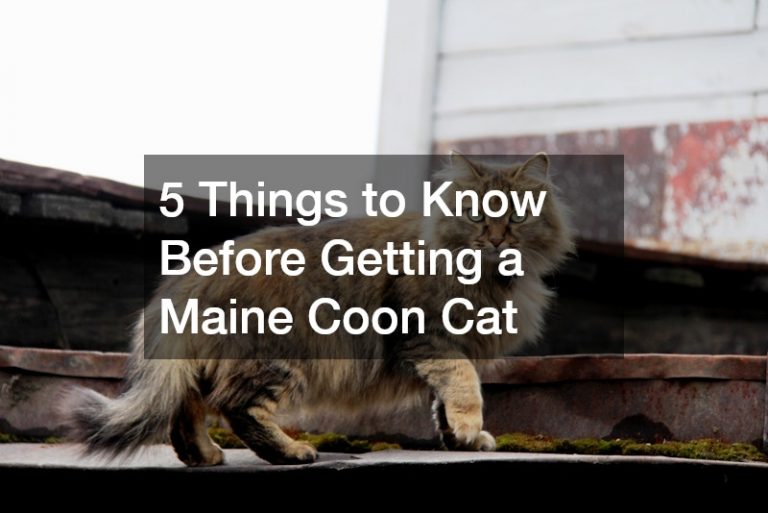Introduction
Starting a pet store can be an incredibly rewarding venture for animal lovers and business enthusiasts alike. However, launching a successful pet store requires meticulous planning and strategic execution. The key to turning your dream into a thriving business lies in developing a comprehensive pet store business plan. This plan will serve as your roadmap, guiding you through the process of setting up your shop, from initial concept to grand opening and beyond. By addressing critical components such as market research, financing, location, and marketing, you can ensure your pet store not only survives but thrives in a competitive market. In this guide, we’ll provide you with the essential steps and considerations to help you establish a successful pet store that meets the needs of your community and stands out in the industry.
Defining Your Pet Store Business Concept

The first step in your pet store business plan is defining your business concept. This involves identifying what type of pet store you want to open and what niche you aim to fill in the market. Will you focus on selling pet food and supplies, or will you also offer services such as grooming, training, and boarding? Understanding your target market is crucial. Are you catering to a specific type of pet owner, such as those with dogs, cats, or exotic animals? By clearly defining your business concept, you can create a unique identity for your store and attract a loyal customer base.
To make your pet store stand out, consider incorporating innovative elements into your business concept. For example, you might offer eco-friendly pet products, host community events, or partner with local animal shelters for adoption days. Additionally, investing in essential equipment like pallet rackings for sale can help you organize and display your products efficiently. A well-defined business concept will not only guide your operations but also help you communicate your vision to potential investors and partners.
Conducting Market Research for Your Pet Store
Market research is a fundamental part of any pet store business plan. It involves gathering and analyzing information about your target market, competitors, and industry trends. By understanding the needs and preferences of pet owners in your area, you can tailor your products and services to meet their demands. Market research can also help you identify potential challenges and opportunities, allowing you to make informed decisions about your business strategy. This step is crucial for ensuring that your pet store is viable and competitive in the marketplace.
In your market research, consider factors such as the local pet population, demographic trends, and consumer behavior. Analyze your competitors to determine what they are doing well and where there might be gaps in the market that you can fill. Additionally, researching relevant regulations and licensing requirements is essential for compliance and smooth operations. For instance, if you discover a high demand for bat control products or services in your area, you might decide to stock those items or partner with a local specialist. Thorough market research will provide you with the insights needed to position your pet store for success.
Crafting a Comprehensive Business Plan

A comprehensive business plan is the cornerstone of a successful pet store. This document outlines your business goals, strategies, and the steps you will take to achieve them. It should include detailed sections on your business concept, market research, marketing plan, operational plan, and financial projections. By crafting a thorough business plan, you demonstrate to potential investors and lenders that you have carefully considered all aspects of your venture. It also serves as a valuable reference tool as you navigate the challenges and opportunities of running a pet store.
When crafting your business plan, it’s essential to be as detailed and realistic as possible. Include specifics about your target market, pricing strategies, and sales forecasts. Outline your plans for securing local equipment rentals that can help you set up your store efficiently. Detail your marketing strategies, including how you will attract and retain customers. Additionally, provide a clear financial plan that includes your startup costs, projected income, and expenses. This comprehensive approach ensures that your pet store business plan is robust and sets you up for long-term success.
Securing Financing for Your Pet Store
Securing financing is a critical step in bringing your pet store business plan to life. Whether you need funds for leasing a storefront, purchasing inventory, or covering operational expenses, having access to capital is essential. There are several options for financing your pet store, including personal savings, loans, grants, and investors. It’s important to explore all available options and choose the one that best fits your financial situation and business needs. Proper financing will ensure that you have the resources necessary to launch and sustain your pet store.
When seeking financing, prepare a compelling business proposal that includes detailed financial projections and demonstrates the potential profitability of your pet store. Highlight any unique aspects of your business, such as partnerships with concrete contractors for building a pet-friendly outdoor space or other innovative features. Be transparent about your funding needs and how you plan to use the money. Lenders and investors will want to see that you have a solid plan in place for achieving your business goals and generating a return on their investment. By securing adequate financing, you set a strong foundation for your pet store’s success.
Selecting the Perfect Location

Selecting the perfect location is a vital component of your pet store business plan. The location of your store can significantly impact your visibility, customer traffic, and overall success. When choosing a location, consider factors such as foot traffic, accessibility, parking availability, and proximity to complementary businesses. A high-traffic area with good visibility can attract more customers and boost your sales. Additionally, the location should be convenient for your target market, making it easy for pet owners to visit your store regularly.
In your search for the ideal location, consider partnering with catering companies that might share space or have adjacent facilities, creating a mutually beneficial relationship. Evaluate different neighborhoods and commercial areas to find a spot that aligns with your brand and customer base. Consider the demographics of the area, including income levels and pet ownership rates, to ensure there is sufficient demand for your products and services. Once you have identified a few potential locations, analyze the costs associated with each, including rent, utilities, and any necessary renovations. By selecting the perfect location, you can enhance your pet store’s visibility and accessibility, contributing to its long-term success.
Designing an Attractive Store Layout
Designing an attractive store layout is crucial to the success of your pet store business plan. An inviting and well-organized store can enhance the shopping experience, encourage customers to spend more time in your store, and ultimately increase sales. Your store layout should be functional, allowing easy navigation for both customers and staff. Consider the placement of aisles, shelving, and display areas to create a logical flow. Make sure that popular products are easily accessible and that the checkout area is convenient and efficient. A thoughtful store design can significantly impact customer satisfaction and loyalty.
To make your store layout both attractive and functional, invest in quality fixtures and equipment. For example, installing pallet rackings for sale can help you efficiently organize and display a wide range of products. Additionally, pay attention to the aesthetics of your store, including lighting, color schemes, and signage. Create a welcoming atmosphere by incorporating elements that appeal to pet owners, such as pet-themed decorations and comfortable seating areas. By focusing on both functionality and aesthetics, you can create a store layout that enhances the shopping experience and supports your business goals.
Establishing Supplier Relationships

Establishing strong supplier relationships is a key element of your pet store business plan. Reliable suppliers ensure that you have a steady inventory of high-quality products, which is essential for meeting customer demands and maintaining a positive reputation. When selecting suppliers, consider factors such as product variety, pricing, delivery schedules, and customer service. Building good relationships with your suppliers can lead to better terms, discounts, and exclusive deals, which can enhance your profitability.
To establish and maintain strong supplier relationships, communicate clearly and regularly with your suppliers. Discuss your needs and expectations, and be proactive in resolving any issues that arise. Consider partnering with suppliers who can provide specialized products or services that set your store apart. For example, collaborating with an air conditioner contracting company can ensure that your store maintains a comfortable temperature for both pets and customers. By nurturing positive relationships with your suppliers, you can secure a reliable inventory and create a competitive edge for your pet store.
Creating an Effective Marketing Strategy
Creating an effective marketing strategy is essential for the success of your pet store business plan. Marketing helps you attract new customers, retain existing ones, and build a strong brand presence in your community. Your marketing strategy should include a mix of online and offline tactics to reach a broad audience. Online marketing can involve social media, email campaigns, and search engine optimization, while offline marketing can include events, local advertising, and community partnerships. A well-rounded marketing strategy can drive traffic to your store and increase sales.
To develop an effective marketing strategy, start by identifying your target audience and their preferences. Tailor your marketing messages to highlight the unique aspects of your store, such as your product selection, customer service, and community involvement. Consider collaborating with commercial asphalt companies to host outdoor pet events or create pet-friendly spaces in your area. Additionally, leverage customer feedback and reviews to build credibility and trust. By implementing a strategic marketing plan, you can increase your store’s visibility, attract more customers, and foster long-term growth.
Hiring and Training Your Staff
Hiring and training your staff is a critical aspect of your pet store business plan. Your employees play a vital role in providing excellent customer service, maintaining store operations, and contributing to the overall success of your business. When hiring staff, look for individuals who are knowledgeable about pets, passionate about animal care, and possess strong interpersonal skills. A friendly and knowledgeable team can enhance the customer experience and help build a loyal customer base. Additionally, consider the specific roles you need to fill, such as sales associates, groomers, and managers, to ensure all areas of your business are adequately staffed.
Once you have hired your staff, invest in comprehensive training to equip them with the skills and knowledge necessary to perform their duties effectively. Training should cover product knowledge, customer service, store policies, and any specialized services your store offers. For example, if you install a new garage door for receiving large shipments, ensure that your staff is trained on how to operate it safely and efficiently. Regular training sessions and professional development opportunities can help your team stay updated on industry trends and best practices, fostering a positive and productive work environment. By prioritizing hiring and training, you can build a capable and motivated team that supports your business goals.
Launching and Managing Your Pet Store
Launching and managing your pet store requires careful planning and execution to ensure a successful start and sustainable growth. The grand opening of your store is an important milestone that can set the tone for your business. Plan a grand opening event that includes special promotions, product demonstrations, and activities to attract and engage customers. Utilize your marketing strategy to generate buzz and drive attendance. The success of your launch can create a strong initial customer base and generate positive word-of-mouth for your store.
Effective management of your pet store involves ongoing attention to various aspects of your business, from inventory management to customer service. Implementing efficient processes and systems, such as generator installation for backup power, can help ensure smooth operations and minimize disruptions. Regularly review your business performance, including sales, expenses, and customer feedback, to identify areas for improvement and growth opportunities. Work with the best roofer in town to make sure your exterior stays well-maintained. Foster a positive work environment by providing ongoing support and recognition for your staff. By maintaining a proactive approach to managing your pet store, you can build a resilient and successful business.
Conclusion
Launching a pet store is a multifaceted endeavor that requires thorough planning, dedication, and strategic execution. A well-crafted pet store business plan serves as your blueprint, guiding you through each step of the process, from defining your business concept to managing daily operations. By conducting thorough market research, securing financing, selecting the perfect location, and designing an attractive store layout, you set the foundation for a successful business. Establishing strong supplier relationships, creating an effective marketing strategy, and hiring and training a knowledgeable staff further contribute to your store’s success.
As you embark on this journey, remember that flexibility and adaptability are key. The pet industry is dynamic, and staying attuned to market trends and customer needs will help you navigate challenges and seize opportunities. By adhering to your pet store business plan and continually refining your strategies, you can build a thriving pet store that meets the needs of your community and brings joy to pet owners and their furry friends.





